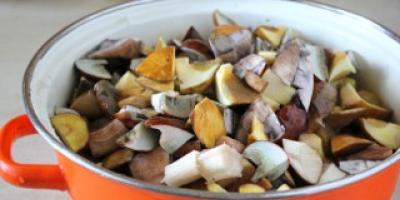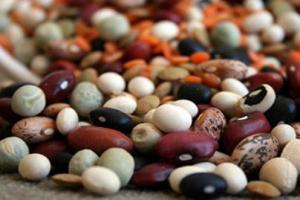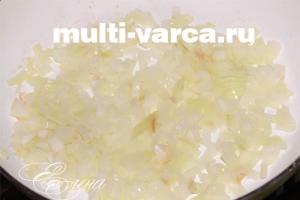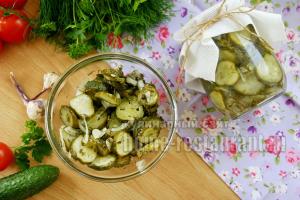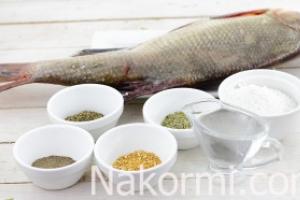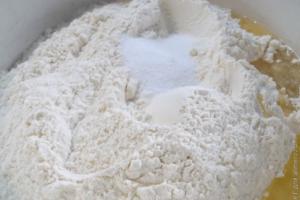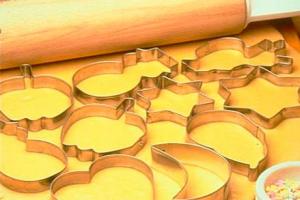Tahini is a thick paste made from ground sesame seeds, it is added to many dishes, for example, falafel or fried meat In addition, it serves as the basis for many sauces.
Tahini is well known in the cuisine of Israel (where it is called "tahina"), Greece and Cyprus - the Cypriot tahini pies "tahino pita" are especially popular during Lent.
1 tablespoon contains 85 calories, 7.2 g fat, 3.2 g carbohydrates, 2.6 g protein. This is an excellent source of healthy fatty acids: per serving 60.1 mg omega-3 and 3.4 mg omega-6.
Your body cannot produce these vital substances, so they must be included in your diet to promote heart and brain health.
There are also small amounts of calcium, iron, copper and phosphorus – minerals, ensuring the strength of bones and teeth, cleansing the kidneys (especially if you take antacids and diuretics), strengthening blood vessels, promoting the production of red blood cells, giving energy, preventing anemia.
Another important component of tahini is thiamine or vitamin B1.. Each serving contains 16 % daily requirement of this nutrient. Has a beneficial effect on the nervous system, muscles and digestion. Thiamine deficiency can cause complications of heart and gastrointestinal diseases.

Tahini is not eaten by itself, it is added to various dishes. Olive oil is often added to tahini. lemon juice, garlic, ground cumin seeds, red pepper, parsley and used as a gravy or simply served with pita bread or bread. Tahina can also be mixed in equal proportions with any thick jam, spread on bread or crackers.
Sesame sauce for chicken

Ingredients:
soy sauce - 2 tbsp. spoons
sugar - 1 teaspoon
green onion - 1 tbsp. spoon
vegetable oil - 1 teaspoon
red pepper - 0.33 tsp
Tahini paste - 2 tbsp. spoons
In a separate bowl, mix all ingredients, reserving some green onions for garnish. Pour the sauce over the chicken and garnish green onions, sprinkle with white sesame seeds and serve.
Fish in sesame sauce

Ingredients for 6 servings:
perka or tsipura - 1 piece
salt - 3 teaspoons
olive oil - 1 cup
finely chopped onion - 3 pcs
finely chopped sweet pepper - 1 pc.
chopped walnut – 100 g
finely chopped parsley - 3 tbsp. spoons
pomegranate seeds - 3 tbsp. spoons
black pepper - twice on the tip of a knife
garlic - 3 cloves
Tahini paste – 100 g
lemon juice - 0.5 cups
Grate the fish outside and inside with 2 tsp. salt. Pour 0.2 cups into a refractory dish olive oil, put the fish in it, pour in 0.2 cups of oil and let stand for 15 minutes. Preheat the oven to 200 degrees. In the remaining oil, lightly brown the onion, add sweet pepper and walnuts and fry everything for 5 minutes. Add 2 tbsp. spoons of parsley and 2 tbsp. l. pomegranate seeds, salt and pepper. Stuff the fish with this mixture and close the abdominal incision. Bake in the oven for 40 - 50 minutes. For the sauce, grind the garlic and mix it with Tahini paste, 0.5 cups of water, lemon juice and salt. Sprinkle the fish with parsley and pomegranate seeds or grapes.
Eggplant in sauce with Tahini paste

Ingredients:
eggplant - 2 pcs.
lemon juice (optional) - from 2 lemons.
Tahini paste - 1/4 cup
garlic - 3 cloves
white balsamic vinegar - 1 tbsp. l.
parsley - 2 tbsp. l.
Grill eggplant until softened, 15 minutes, turning constantly. After this, before the eggplants have cooled, remove the skin. Using a blender, puree the eggplant pulp, then add Tahini paste, lemon juice, vinegar and garlic. Serve with olive oil, parsley and red pepper.
Cookies with Tahini Paste

Ingredients:
Tahini paste - 1 cup
sugar - 1 glass
flour - 2 2/3 cups
baking powder - 1 pack
butter or margarine - 200 g
Soften the butter, grind the butter and sugar with a spoon, add the rest of the ingredients and knead the dough. The dough turns out similar to plasticine. Make dough balls the size of walnut, place them on a baking sheet covered with paper, without pressing down. Bake at 160 C for about 20 minutes, the cookies should be beige in color. During the baking process, the cookies will spread a little and crack. After baking, carefully move the cookies - they are very fragile at first.

Those who have been to the East may have come across jars on sale with the name “Tahini”, unknown to many. What is hidden behind these six letters? Turns out, tahini is a thick paste made from ground sesame seeds. The first mention of tahini, which is often also called sesame paste, is found in cuneiform instructions written about four thousand years ago. These sources tell of the custom of serving sesame wine to the gods. If you are not planning to travel in the near future, but would like to try this unusual dish, then we suggest preparing it at home. Fortunately, this is not as difficult as it may seem.
Tahini is eaten in Greece and Cyprus, where pies with this paste are especially popular during Lent. The appetizer is well known in Israeli cuisine (by the way, in Israel it is called tahini). In China, Japan and Korea, tahini is considered an important ingredient in a wide range of dishes. Pasta goes well with vegetables and fish; before use, it must be diluted with water to the consistency of sour cream; lemon juice, garlic and salt are also added to it. Pasta often becomes an ingredient for many oriental sweets, including for halva. A world-famous snack, hummus, is also prepared from it. Some even eat tahini, spread on bread or flatbread.
Benefits of tahini
Tahini is not only tasty, but also healthy. Pasta is considered a source of large amounts of vegetable proteins, which give strength and youth to the body. The paste contains essential fatty acids omega-3 and omega-6, which are not produced by our body. Tahini also contains small amounts of calcium, iron, copper and phosphorus. Among the valuable elements present in the paste are methionine, which cleanses the liver of poisons, as well as alkaline minerals that promote weight loss. The results of a product study say that tahini helps in the fight against diabetes, as well as Alzheimer's disease, and by regularly enjoying sesame paste, you reduce the risk of cancer and cardiovascular diseases.
Tahini. Classic recipe
You will need:
- sesame – 100 grams,
- sesame oil – 1-2 tablespoons.
Cooking method
- Place sesame seeds on a baking sheet. Before cooking, be sure to taste the seeds; under no circumstances should they be bitter. Place in the oven for 8-10 minutes to brown a little (do not overdo it, otherwise the taste of the finished product will be far from the original), do not forget to shake periodically.
- Pour the toasted sesame seeds into a blender and, gradually pouring in sesame oil (by the way, it can be replaced with nut, olive or any other not strong-smelling oil), beat until smooth, homogeneous, creamy consistency.
- If you followed all the recommendations during preparation, then you should end up with a mass similar in consistency to thick, viscous sour cream.
- It is recommended to store the finished tahini in a tightly closed container in the refrigerator for no more than 2 months.
We said that some people eat the paste simply by spreading it on bread, but if you find it too concentrated, you can diversify its taste by adding ingredients to it as you wish. So, as we mentioned above, some add garlic to it, others put finely chopped greens, and still others even mix sesame paste with honey and devour it afterwards as a dessert. Original taste it works if you add a little to the paste lemon juice. Experiment, try and you will definitely find the combination of tahini that seems ideal to you. Bon appetit!
Many have heard about delicious pasta tahini. Many people know what it is, but not everyone knows that this sesame paste, also called tahini and tahina, can be prepared independently without much effort. This ingredient is considered an indispensable component for all oriental dishes. Today we are sharing a tahini recipe. Let's get acquainted with it step by step.
Tahini - what is it?
Still, there are people who are not aware of what this aromatic paste is. Main ingredient sauce - sesame seeds, which can be purchased at almost any store. Tahini is especially appreciated by lovers of original oriental cuisine and vegetarians. The latter fell in love with pasta for its calorie content, it is very filling, which is why, if you are watching the condition of your figure, you should not be overzealous with eating it, as it will quickly be deposited in problem areas of the body.
Tahini - what is it? This is very valuable and useful product. The paste contains many fatty acids, vitamin B and minerals. By eating tahini, you improve the condition of your hair, prevent acne, and your skin becomes healthier and fresher. In addition, the product has a beneficial effect on digestion, and therefore on the body as a whole.
If you add yogurt or plain drinking water to tahini, you get a fragrant sauce that ennobles vegetable dishes, salads and unleavened flatbreads. Feel free to use tahini during fasting. What it is - now you know, it is a healthy, tasty and satisfying addition to any dishes.

Choosing the right sesame seeds
Making tahini is a simple process and the resulting flavor will depend on the ingredients chosen. You will need 300 grams of sesame seeds and four tablespoons of extra virgin olive oil. If problems cannot arise with the second component, then you need to be able to select the first one.
When you come to a store or shop that sells similar products, ask the seller to give you two or three sesame seeds to try. Chew them well and distribute throughout your mouth. There should be no signs of bitterness in the taste; even a small amount of it will completely ruin the paste.
Seed preparation
It is very easy to prepare the paste, but for this you need to properly prepare the seeds. After buying sesame, many women prefer to immediately fry it, after which the sauce turns out uneven, there are small pieces, and the tahini should be completely pureed. So, first of all, the seeds need to be soaked in water at room temperature for four hours. Place the ingredient in a deep container, fill it so that there is a centimeter more water. After the time has passed, drain the water and keep the product in the refrigerator for another four hours.

Roasting
Place the sesame seeds in an even layer on a baking sheet lined with baking paper if you don't have a non-stick coating. First, heat the oven to 180 degrees, after the seeds have dried, increase the temperature to 200. The roasting time is about 20 minutes, including drying, during which you need to remove the baking sheet from the oven several times and mix the seeds. It’s easy to check if they are ready; they should become a beautiful golden color; do not overcook them, which will cause the sesame seeds to turn dark brown.
Of course, you can do it differently by frying the seeds in a frying pan. Do not cover the dishes while drying.

Preparing tahini
When the seeds are well roasted, pour them into another container until they cool completely. After this, place the ingredient in a blender bowl and grind them for several minutes at low and then at high speed. First of all, the sesame will break into small particles, from which oil will appear, which will contribute to the complete abrasion of the seeds in the puree. If the process takes too long and the particles do not wear off for a long time, add half (2 tablespoons) of the prepared olive oil. After this, the paste will form faster. At the end of the process, add the remaining oil and mix the ingredients with a blender for another four minutes. That's it, sesame tahini is ready.

Additional components
As was written earlier, tahini sauce is prepared depending on the recipe of the dish for which this ingredient will be needed. Add water, salt, yogurt or lemon juice to the paste. If you prepare the sauce immediately after preparing the pasta, you can add a tablespoon of sesame oil to it, just not refined, so the component will acquire an even brighter aroma. If you are preparing tahini for future use and will store it in the refrigerator, it is better not to add anything extra so that the paste can be stored for a longer time and does not lose its taste and smell.

What to cook with tahini?
You can dip pieces of grilled meat into this sauce, fresh vegetables, lavash. Without tahini, you won’t get a full-fledged hummus; this sauce will complement its taste. We bring to your attention this particular recipe, it really deserves attention.
You will need to take two glasses chickpeas, it is also called chickpeas and garbanzos. All existing liquid is drained. Other Ingredients:
- the third part of a glass of tahini - we have already told you what it is and how to prepare it;
- four tablespoons of lemon juice;
- a teaspoon of salt;
- two cloves of garlic, cut in half;
- a pinch of paprika and a teaspoon of any herbs;
- a tablespoon of refined olive oil.
Blend all ingredients, except herbs and butter, in a blender and place on a flat dish in an even layer. After this, make longitudinal grooves, pour in oil and decorate with herbs.
Tahini paste, the recipe for which will surprise you with its simplicity, is widespread in the Middle East. Made from ground sesame seeds. Tahini (tahini, tahina) has a creamy consistency. The taste is tart. Pronounced nutty aroma. The color can vary: from light beige to dark brown.
Oriental delicacy tahini
Tahini is a traditional Arabic snack with its own history. In ancient times, this could be seen exclusively on the table of a wealthy person. In some countries, the mixture was even used as currency. Over time, its value diminished somewhat - it became an everyday, affordable food for different segments of the population, but the taste and love of the Arab people for this product remained unchanged.
The main advantage of tahini is its versatility. For example, in Turkey they like to mix pasta with fruit syrup, in Greece with honey. In Iran, tahini is the “raw material” for preparing halva and seasoning for barbecue.
Types of sesame
Pledge good food— compliance with cooking rules and high quality raw materials. The main ingredient in tahini is sesame. The taste of the finished pasta depends on its quality.
Sesame seeds differ from each other in shades and taste, depending on the variety.
There are 3 main colors in nature. Those, in turn, can have different undertones, which ultimately gives the seed its own unique color. For example, beige, ivory, grayish and even shades of red.
Types of sesame:
- White.
The best among his “brothers”. Considered a delicacy, it is often exported to other countries. It is suitable for use in pure form, it is actively used in the confectionery industry and in the preparation of Asian dishes. Ground white sesame is often used to make curry sauces and chutneys. In India, the use of this species for the preparation of unrefined sesame is popular. Has a mild aroma.
- Brown.
It has a mild taste and aroma. Used for preparing edible and cosmetic oils.
- Black.

Types of sesame
Sharp, pronounced tart smell and taste. The black grains are often ground and used in cooking. rice dishes. They have medicinal properties, are found in many medications because they contain antioxidants. Black sesame oil is considered the best; it is used for cosmetic and medicinal purposes.
When buying sesame seeds to make tahini, please note that the taste of the paste will depend on the taste of the grains. If you are not used to tart dishes, then it is better to take white or brown sesame seeds.
If you like experiments, you can take several types by weight. The recipe for making tahini paste does not require you to use only 1 type of sesame.
Properties and nutritional value of tahini paste
In 100 gr. tahini contains:
- 18 gr. ;
- 51 gr. fat;
- 18.5 gr. carbohydrates.
At the same time, it contains up to 90% fatty acids, which are classified as polyunsaturated.
Benefit
Tahini is rich in useful substances. It contains:
- Vitamins (E, C, group B).
- Minerals (calcium, magnesium, phosphorus, iron, zinc).
- Fiber.
- Lecithin.
- Organic acids.
- Fitin.
- Beta-sitosterol.
It has been proven that regular use sesame paste works as a prevention of cancer. In addition, it removes toxins from the body, improves blood clotting, and improves metabolism.
Harm
Eating pasta is contraindicated for people:
- Allergy sufferers or those with a predisposition to reactions to food products.
- Those who have the problem of excess weight due to the fact that tahini is high in calories. Especially if the diagnosis is one of the degrees.
- Suffering from diseases of the liver, stomach, pancreas, gall bladder.
If you consume the paste in large quantities, even a healthy person may experience side effects. It is expressed in possible stomach upset and nausea. There is no per se norm of use that cannot be exceeded. Listen to your feelings and remember that the product is fatty, high in calories and quite “heavy”.
Tahini in the kitchen
The beauty of tahini is its versatility. This paste can be used as:
- An independent dish.
- Component of the main dish.
It is added when preparing hummus, falafel and other oriental dishes. Used as a base for sauce, the mixture goes well with garlic, low-fat yogurt, spices, and sweet fruit syrups.
What can you cook with tahini?
- Hummus
You will need:
- tahini;
- oil (olive or peanut);
- lemon juice;
- green;
- parsley;
- paprika.
Preparation:
The chickpeas must first be soaked and left for 7-10 hours. After which it needs to be boiled and ground into puree. Add tahini, lemon juice, squeezed garlic, mix again. Pour oil into the mixture. The quantity is adjusted by eye based on the volume of the paste, mix thoroughly.
Ready! Serve with paprika and parsley.
- Hot sauce.
You will need:
- tahini;
- garlic;
- salt;
- freshly ground;
- oil.
Preparation:
All ingredients are mixed together until the desired consistency is formed. The amount of spices varies based on your own preferences.
As previously written, tahini is versatile and goes well with almost anything! So when preparing a sauce based on sesame paste, do not be afraid to experiment, “play” with the ingredients until you come to that very taste!
How to make tahini at home

Making tahini at home
Sesame paste is a great addition to festive table. This oriental delicacy will diversify familiar dish, will allow the taste to sparkle in a new way.
It will also become a “lifesaver” in those moments when there is almost no time to prepare dishes, and guests are on the way. Can be cooked quick snacks, sandwiches with sesame mixture.
This easy tahini paste recipe contains only 2 ingredients:
- 100-150 gr. sesame seeds;
- oil about 100 ml (can be sesame, nut). The quantity can be increased as needed.
Preparation:
Sesame needs to be dried for 5-10 minutes. in the oven or in a non-stick frying pan. Then place the seeds in a special container, stirring with butter and blending with a blender.
That's it. You can add salt, pepper, garlic to taste. The mixture can be stored for up to 2 months, but be sure to store it in the refrigerator and in a closed container.
Sesame Tahini Paste Recipe:
Did you like it? Like and save on your page!
See also:
Tahini (sesame or sesame paste) is made from ground sesame seeds. The consistency is similar to peanut butter.
1 tablespoon contains 85 calories, 7.2 g fat, 3.2 g carbohydrates, 2.6 g protein. It is an excellent source of healthy fatty acids, with 60.1 mg of omega-3 and 3.4 mg of omega-6 per serving. Your body does not know how to produce these vital substances, so they must be included in your diet. To promote heart and brain health.
There are also small amounts of calcium, iron, copper and phosphorus - minerals that provide strong bones and teeth, cleanse the kidneys (especially if you take antacids and diuretics), strengthen blood vessels, promote the production of red blood cells, provide energy, and prevent anemia.
Another important component of tahini is thiamine or vitamin B1. Each serving contains 16% of the daily value of this nutrient. Has a beneficial effect on the nervous system, muscles and digestion. Thiamine deficiency can cause complications of heart and gastrointestinal diseases.
Sesame tahini paste is a key product in Middle Eastern cooking. It is what gives special taste and texture to classic oriental dishes. But the special charm lies in the large number of useful properties, many of which are aimed at improving appearance. For clear, glowing skin, healthy hair and a flawless figure, eat tahini with meat and seafood!
It is an excellent source of methionine, which cleanses the liver of poisons, as well as alkaline minerals, which promote weight loss.
We improve digestion
For people suffering from digestive disorders, this is truly a fabulous product! When making paste, sesame seeds are ground so tightly that a homogeneous mass is obtained that is easily accepted and digested by the body. Even those who suffer from gastrointestinal disorders can use sesame paste without fear. It will not only saturate the body with nutrients, but will also help digest heavier foods.
Treating acne
According to the University Health Center in Illinois, 80-90% of today's teenagers suffer from acne and skin sores. Acne appears for various reasons: from bacterial infection and simple uncleanliness to over-active production of pore-blocking fat and a diet high in carbohydrates.
There are many homemade acne-fighting recipes (such as benzoyl peroxide and salicylic acid), but you may not be familiar with tahini-based recipes.
Sesame paste is rich in zinc, the effectiveness of which in the treatment of acne has been confirmed by employees of the Medical Center in Maryland. The current recommended daily dose of this mineral is 11 mg. It is possible to independently increase the dosage to 40 mg per day, no more.
Preventing hair loss
Hair loss often signals metabolic disorders. A balanced diet normalizes metabolism and replenishes the deficiency of nutrients (especially zinc) that hair needs so much. Other symptoms of zinc deficiency include taste disturbances, diarrhea, impotence, vision problems, acne and lack of appetite.
A 100-gram serving of tahini contains 10 mg of zinc, which is 70% of the daily value. Other zinc-rich foods: oysters, wheat germ, calf liver, dried watermelon seeds, dark chocolate, cocoa powder, lamb and peanuts.
Everyone inherited sesame paste beneficial properties sesame seeds and. But its undeniable advantage is its delicate, pleasant-tasting and easy-to-digest texture.



